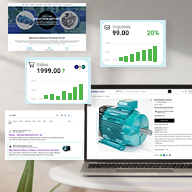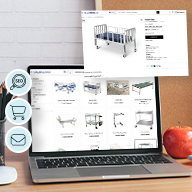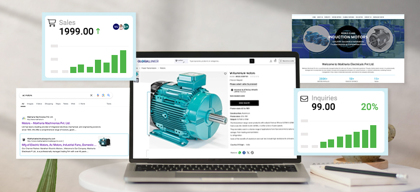SME IPO: An overview

Business Development
381 week ago — 4 min read
In India, micro, small and medium enterprises account for 33% of India’s manufacturing output. There are as many as 36 million such enterprises in the country, employing more than 80 million people. Clearly the growth of the economy depends on SMEs getting easy access to funds.
What is SME IPO?
To meet this challenge of raising funds, two national bourses – BSE & NSE have introduced a platform for SMEs to be able to raise funds by getting listed on their exchange under the rules & regulation laid down by SEBI (Securities Exchange Board of India). These platforms i.e. BSE SME & NSE Emerge offer entrepreneurs and investors a friendly environment, which enables the listing of SMEs from the unorganized sector scattered throughout India, into a regulated and organised sector – just like the major corporations. For SME stocks to get listed and traded on exchange, a company has to come up with their Initial Public Offer (IPO) at the exchange's SME platform.
How does it work?
These bourses enable SMEs to step into the platforms and gain access to the world of finance & capital markets for their further growth & development. Then these bourses assist SMEs to raise equity capital for their growth and expansion and thus help them grow into fully-fledged major corporations & in due time, migrate them into the main board i.e. exchanges trading their shares every second during market hours.
Proof of concept
SME IPOs have gained widespread attraction. The numbers reinforce this – 187 companies raised 1,463 crore with their market cap approaching to a staggering INR 18,000 crore on BSE SME.
Reasons why SME IPO is gaining popularity:
- Easy access to capital for SMEs
- Enhanced visibility and prestige: The SMEs benefit by getting greater credibility and enhanced financial status leading to demand in the company’s shares and higher valuation of the company.
- Encourages growth of SMEs: Equity financing provides growth opportunities like expansion, mergers and acquisitions thus being a cost effective and tax efficient mode.
- Ensures tax benefits: In case of listed securities Short Term Gains Tax is 15% and there is absolutely no Long Term Capital Gains Tax.
- Enables liquidity for shareholders: Equity financing enables liquidity for shareholders, provides growth opportunities like expansion, mergers and acquisitions, thus being a cost effective and tax efficient mode.
- Efficient risk distribution: Capital markets ensure that the capital flows to its best uses and that riskier activities with higher payoffs are funded.
- Employee incentives: Employee stock options ensures stronger employee commitment, participation and recruitment incentive.
How do you get on it?
BSE SME breaks down the process into 5 Ps – Planning, Preparation, Process, Public Offering, Post Listing.
Eligibility criteria
- Company should be registered under the Companies Act of 1956
- Post issue paid up capital should be at least INR 3 crores.
- Net worth of the company should be at least INR 3 crores.
- Net Tangible Assets of at least INR 3 crore according to the company’s latest audited financial results.
- Track Record: Distributable profits in terms of Section 123 of the Companies Act 2013 for at least two years out of immediately preceding three financial years or the company’s net worth should be at least INR 5 crores.
Other Requirements
- Company should have a website
- Company should be able to facilitate trading in demat securities and enter into an agreement with both the depositories.
Posted by
GlobalLinker StaffWe are a team of experienced industry professionals committed to sharing our knowledge and skills with small & medium enterprises.
Network with SMEs mentioned in this article
View GlobalLinker 's profile
SME Inspirations
Most read this week
Trending
Ecommerce 4 days ago

















Comments (2)
Please login or Register to join the discussion